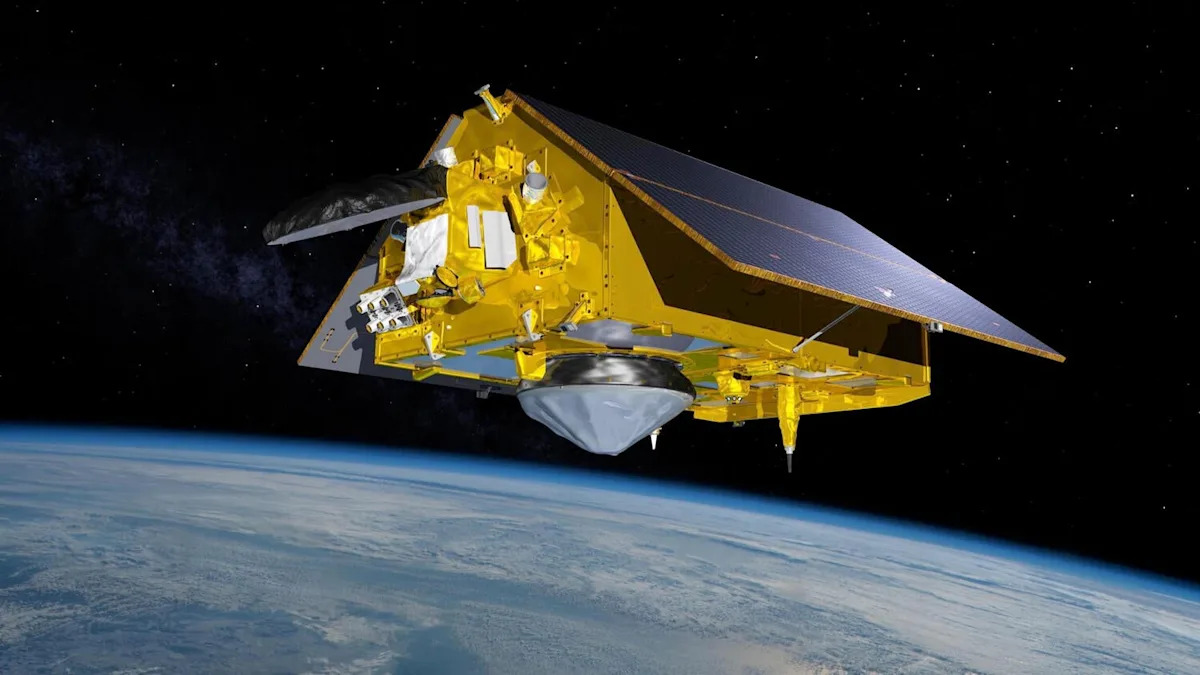Early Monday, SpaceX launched a joint NASA-European environmental satellite, the second in an ongoing billion-dollar project to measure long-term changes in sea levels, a key indicator. climate change.
The first satellite, known as Sentinel-6 and named after NASA climate scientist Michael Freilich, was launched November 2020. The final spacecraft, Sentinel-6B, launched from California on a Falcon 9 rocket at 12:21 pm EST.
A SpaceX Falcon 9 rocket soared into the night sky over Vandenberg Space Force Base in California, launching a sophisticated environmental satellite into orbit that will monitor changes in sea levels around the world. / Credit: SpaceX webcast
Both satellites are equipped with sophisticated cloud-penetrating radar. By calculating how long it takes for the rays to bounce off the ocean 830 miles deep, Sentinel-6 satellites can track sea levels with an accuracy of about one inch, as well as measure wave heights and wind speeds.
The project builds on earlier missions from the early 1990s that provided a continuous stream of sea level data.
These data indicate that sea levels are slowly but surely rising. widely interpreted as evidence of global warming caused largely by human industrial activity.
But in keeping with recent Trump administration policies aimed at curtailing climate research and interpretation of such data, NASA did not directly mention “climate change” or “global warming” at Saturday's briefing before the Sentinel-6B launch.
In a press kit released by NASA for the first Sentinel 6 mission in 2020, the first item on the “need to know list” states that the satellite will “provide information that will help researchers understand how climate change is altering Earth's coastlines—and how quickly it is happening.”
In the Sentinel 6B mission press kit launched Monday, NASA's first “need to know” paragraph simply stated that “Sentinel-6B will contribute to a multi-decade dataset that… is key to improving public safety, urban planning, and protecting commercial and defense interests.”
Karen St. Germain, director of NASA's Earth Sciences Division, did not directly mention climate change at Saturday's briefing, instead focusing on the practical importance of sea level monitoring.

A camera mounted on Falcon 9's second stage captured a breathtaking view of Sentinel-6B's solo mission as the two craft flew more than 800 miles over Madagascar. / Credit: SpaceX
“Sentinel 6B is the latest in a three-decade series of missions that continuously monitor the height of our planet's sea surface, finding patterns and expanding our understanding of planet Earth,” she said.
She said the data provided by the Sentinel-6 satellites “supports navigation, search and rescue, and industries such as commercial fishing and shipping. These measurements form the basis for U.S. flood forecasts for coastal infrastructure, real estate, energy storage facilities and other assets along our coastline.”
This data, she continued, will help scientists “understand and predict coastal erosion and saltwater intrusion into inland water supplies used for agriculture, irrigation, and municipal drinking water.”
Regardless of interpretation, the Sentinel-6B launch went off without a hitch.
After lifting off from Launch Complex 4E at Vandenberg Space Force Base, the first stage of the Falcon 9 rocket lifted the vehicle out of the dense lower atmosphere, separated and flew back to the landing pad at the launch site in California.
The upper stage then fired two burns of its single engine and then launched the 2,600-pound Sentinel-6B into an 830-mile-high orbit tilted 66 degrees to the equator, the same orbit used by Sentinel-6A and earlier sea-level monitoring spacecraft.
In 112 minutes per orbit, the solar-powered satellite will fly over locations between 66 degrees north and south latitude, covering 90 percent of the world's oceans.

An artist's impression of the Sentinel-6B satellite in normal operation. / Credit: NASA
Along with measuring sea levels, the new satellite will monitor temperature and humidity in the lower atmosphere as well as the upper stratosphere using an instrument that measures atmospheric effects from signals broadcast by navigation satellites.
But the main mission is to monitor sea level changes on Earth.
“The dynamic balance that was maintained before the Industrial Revolution has been disrupted by the almost instantaneous burning of vast carbon reserves as our societies have evolved,” Craig Donlon, a project scientist for the European Space Agency, said before Sentinel-6's first launch in 2020.
“We see evidence of this dramatic change in many different dimensions… but they all point in the same direction: the Earth is warming. And the greatest indicator of this imbalance in the Earth system is rising sea levels.”
The Sentinel-6 satellites are a collaboration between NASA, the European Space Agency, the European Organization for the Exploitation of Meteorological Satellites (EUMETSAT) and the National Oceanic and Atmospheric Administration (NOAA).
St. Germain said NASA's share of the cost of both Sentinel-6 satellites was about $500 million. Europeans contributed a similar amount.
When working people become homeless
President Trump's pardon of a crypto billionaire raises concerns about how he is using the pardon
Louisiana father says 'it's disturbing' after deepfake images of his daughter were allegedly posted.








